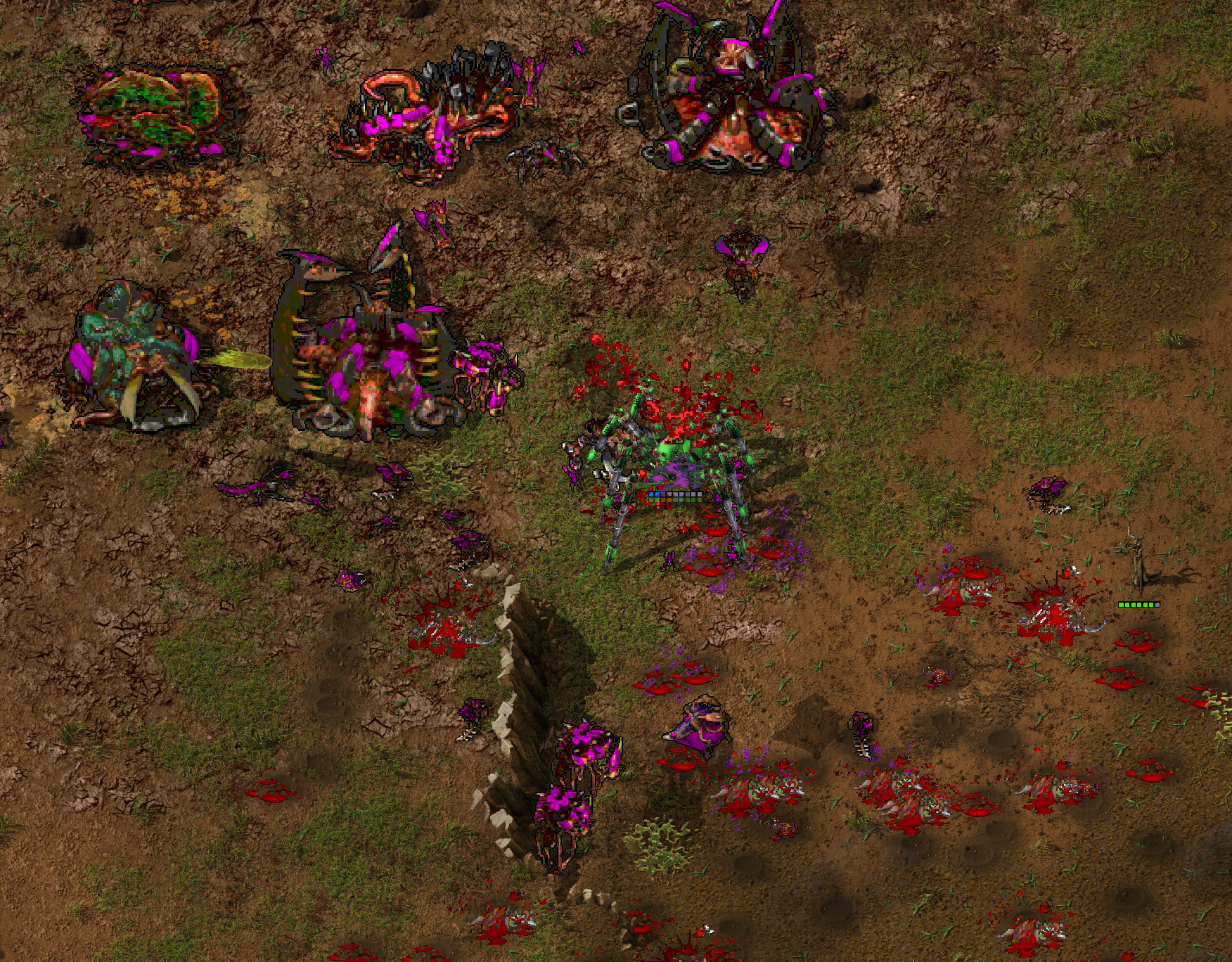
Instead of simply attack moving into a group of Marines, it is much better to use the move command to run amongst them first before allowing them to attack. The most commonly used example of this is Zerglings against Marines. This keeps the Zerg player's units alive longer and therefore allows them to do more damage. It spreads the enemy's ranged damage more evenly over the Zerg player's units.This increases the damage dealt by the Zerglings, for example, because more of them are in contact with the enemy. By surrounding the enemy, the player has more surface area from which to attack. This is essential when using Zerglings against Marines or Dragoons. The technique is the positioning of melee units around and amongst the opponent's units. For further discussion, see Mutalisk Harassment. This does not interfere with any league rules as rules against stacking apply only to ground units.

Mutalisk Micro usually involves a combination of A) stacking Mutas and B) using move-shot to keep them moving while shooting and to increase their effective range. This technique can of course also be applied to any other unit as well. This is an integral part of most Spire builds. The most obvious use is storing three Larva for the moment when your Spire completes, allowing you to build a large number of Mutalisks instantly. Saving them up to produce one large production round is a very common technique. The main use of this flexibility is to produce as many Drones as possible for as long as possible, then at the last moment produce the bare minimum number of combat units required to hold off the opponent's attacks.Įach Hatchery can have up to three Larva at a time. While Protoss or Terran players will generally produces worker and combat units simultaneously for the whole early to mid-game, Zerg players are able to focus entirely on one or the other. The use of Larva rather than production buildings results in a uniquely flexible economy. The number of Hatcheries the player has at his or her disposal and the Larvae that spawn from them therefore become the defining feature of most build orders. the number of Larvae available at any given time). Therefore it is essential that the player carefully plan the use of his production capacities (i.e. Unlike the other races, Zerg has to spawn workers and fighters from the same resource: Larva. This makes Zerg Economic Management drastically different from Protoss or Terran macroeconomics.įor a more detailed discussion, please see also: Zerg Economic Management Larva Management and Number of Hatcheries Most times things like Drone saturation (number of Drones per Mineral patch) depend on the number of expansions, the match up and the general game flow.

There are only very little general rules which hold true for Zerg Economic Mangement.

See also: Zerg Micro Tips Key Ideas Zerg Economic Management


 0 kommentar(er)
0 kommentar(er)
